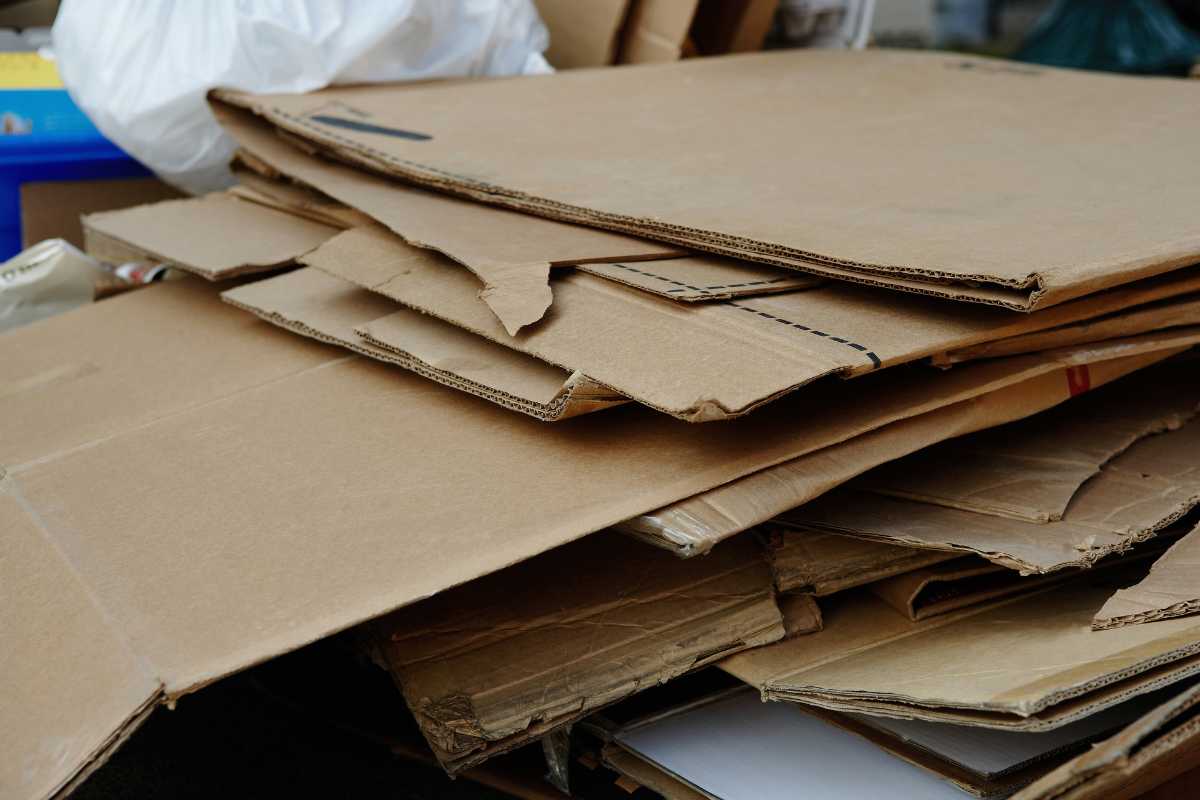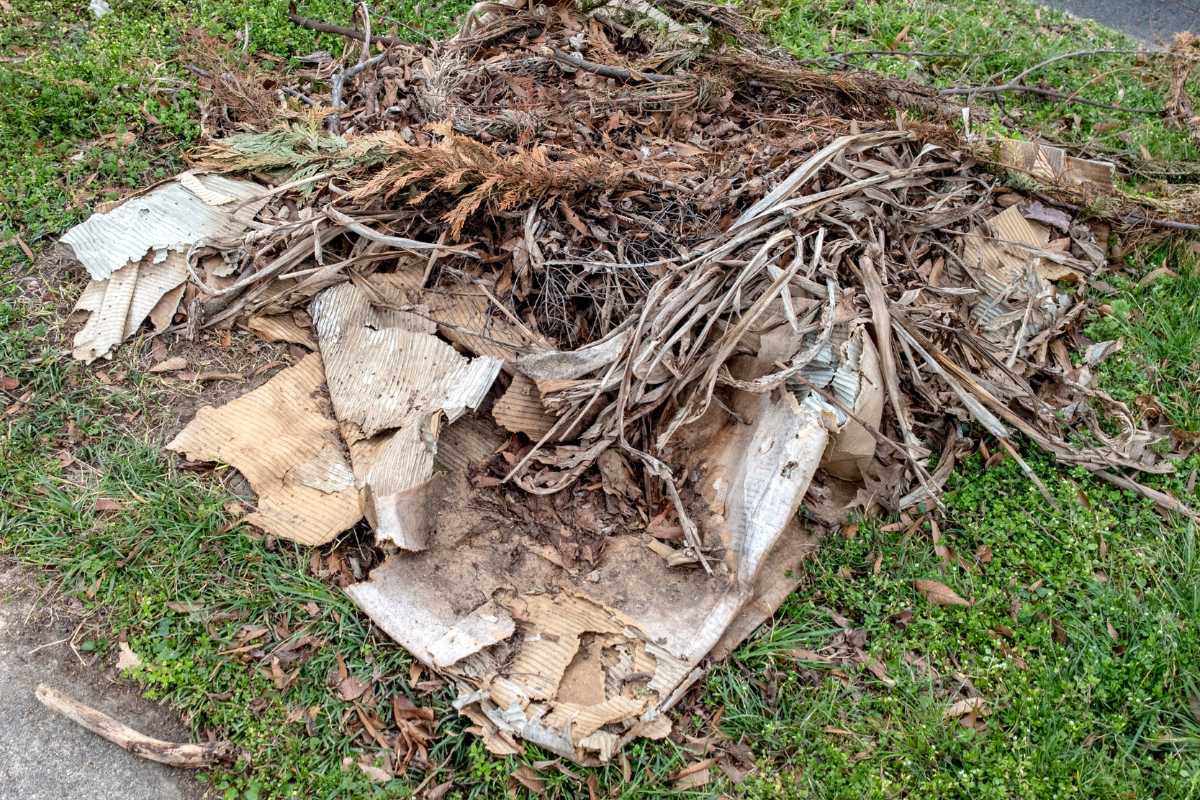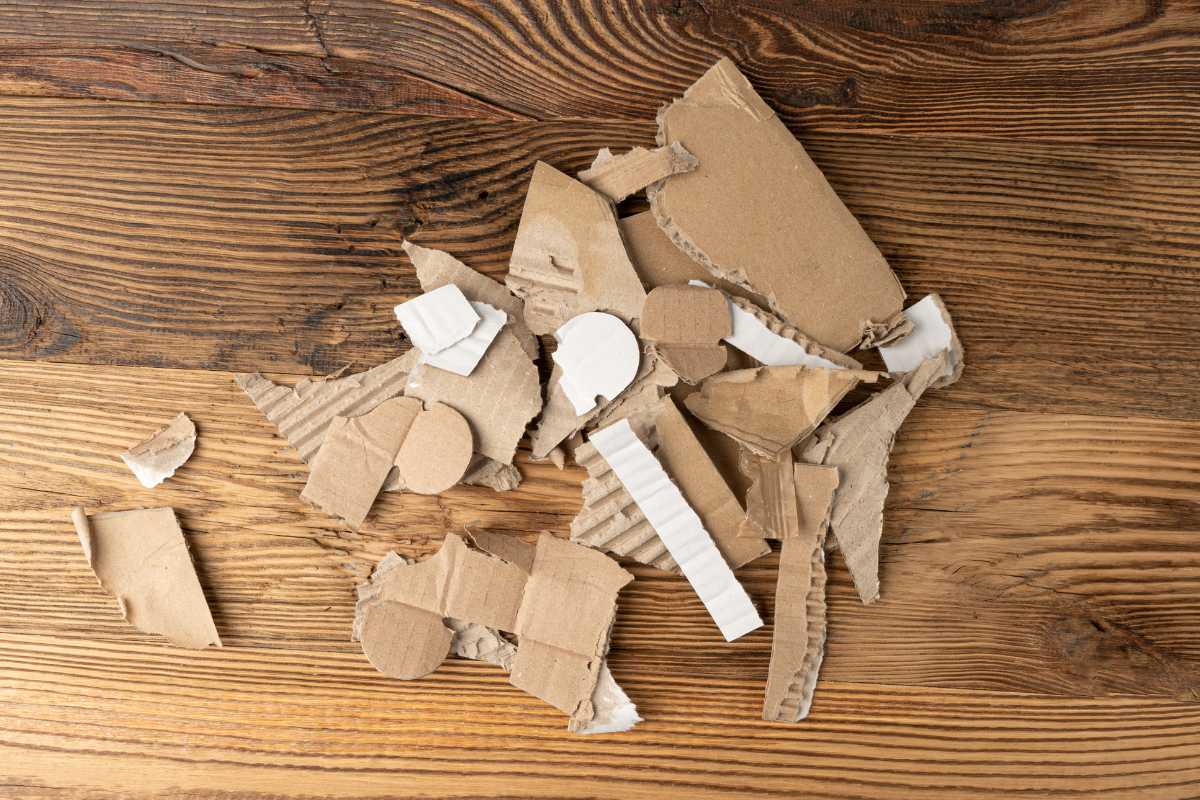There are many materials that are available to compost that you might not have considered before, and cardboard is one of them.
Cardboard is an organic material, although you may not be used to thinking of it in this context.
While cardboard can be recycled, you might want to consider composting it if the alternative is sending it to a landfill.
In this article I’m going to go into detail about how to compost cardboard, as well as list some of the benefits and steps that you need to take in order to successfully compost cardboard.
Cardboard can be used in the garden in a couple of ways. Read on to discover how to utilize cardboard in your gardening rather, than throwing it in the trash.
Can I Compost Cardboard?

Yes! You can absolutely compost cardboard! It is an organic material, despite it being a processed one.
Cardboard can be added to any compost piles, composters, and even wormeries (worm composters).
Cardboard is predominantly made of pulped wood, and that makes it totally suitable for composting.
If you are trying to be a strict organic gardener, then you will only want to use cardboard you know does not contain any chemicals. Brown corrugated cardboard tends to be the least processed and the one favored by organic gardeners.
Like most things, you should break it down and shred the cardboard before composting it. Remember to only use it in moderation to maintain a healthy compost mix.
Types of Cardboard That Can Be Composted

Pretty much any type of cardboard can be composted. These include:
- Corrugated cardboard
- Packing boxes
- Greetings cards
- Postcards
- Business cards
- Flyers
- Egg boxes
- Inner tubes of toilet or kitchen rolls
- Amazon envelopes and boxes
Even though this is covers a lot of cardboard types, there are still some that shouldn’t be composted.
Types of Cardboard That Cannot Be Composted
You may want to avoid cardboard that:
- Has been highly processed with chemicals
- Has plastic coating, or has metallic or chemical laden inks printed on it
Some people can successfully compost those too, so all is not lost.
The plastic coating on some cardboard, like cereal boxes, can be removed from the compost later, or you can soak the box before putting it in the composter.
If you’re in doubt about whether you can compost a piece of cardboard, then it’s left down to your personal preference.
Most things can be broken down with time, so if you’re not particularly fussed about being 100% organic, then the majority of cardboard will be absolutely fine to use.
How to Compost Cardboard

Like most compostable materials, it is better that you break it down a bit first before adding it to your composter or compost heap.
- Related Article: How to Shred Cardboard
Some manufacturers are now taking biodegradability into account, and use compostable tape and packing peanuts in their delivery boxes. In these cases, you won’t need to do much prep before you put the materials onto the compost heap.
Cardboard is considered to be a brown material, as it is one that is high in carbon. It can help to absorb excess moisture, wicking it away from areas that might become too soggy.
Cardboard can be great for gardeners who are composting a lot of food scraps, but don’t have access to many woody cuttings to balance out their compost’s green to brown ratio.
Worms love cardboard, and it can be added to a worm farm or wormery, but be wary of adding too much thinking that it willadd nutrients. It doesn’t provide any nutrients for your worms.
Some gardeners use cardboard when using the lasagna gardening method, adding a layer of cardboard in-between layers of green materials. If you plan to do this, it is advisable to soak the cardboard with water before adding it as a layer. You won’t need to shred it this way as you can add it as sheets.
Cardboard can also be used as a mulch, by adding a layer of cardboard on top of your soil, you will be able to suppress weeds and help with moisture retention.
If you’re using it as a much, you can shred it as you wish, but it may last longer if you keep it whole. Unlike composting, it is desirable to keep your mulch as long as you can before you have to replace it.
Tips for Composting Cardboard
Below are my top tips when it comes to composting cardboard:
1. Break down the cardboard first

Shred, soak, or tear up your cardboard before adding it to your heap to speed up decomposition.
However, if you are using cardboard to mulch or as a layer in lasagna gardening, you can keep it in sheets and place it on top of the soil.
2. Remove any foreign objects before composting
Some people prefer to remove any bits of plastic from the compost after the cardboard has broken down, but I find it less labor intensive to do this beforehand.
I also remove staples, as I have been cut when handling compost containing bits of metal before. That being said, some gardeners let the staples decompose as they add iron to the soil.
3. Don’t use plastic coated cardboard
The benefit of adding the small amount of cardboard will be outweighed by having to remove the plastic. It’s better to recycle coated cardboard if you can.
4. Don’t add too much cardboard
Remember, the balance of greens to browns should be 50/50. If your compost pile isn’t decomposing very fast, it’s likely that you added too many brown materials, and adding cardboard will only make this issue worse.
Cardboard Composting Final Thoughts
Cardboard is a useful addition to your compost bin, especially if you live in an area where there aren’t many woody plants available.
The benefits include helping to break down waste faster, absorbing excess moisture, and providing a nutrient source for your worms.
However, it does take time to get through a large quantity of cardboard, so it’s best to start small and work your way up.
Learn about other composting ingredients:
Cardboard Composting FAQs
Is cardboard good for compost?
Yes, cardboard is good for compost because it helps to break down waste more quickly. It also absorbs excess moisture, which makes it easier to turn over. You should add cardboard to any type of compost bin, including worm bins. However, it is recommended that you don’t add too much at once as it could slow down decomposition.
Is it better to recycle or compost cardboard?
It depends on what you want out of your compost. Recycling cardboard is beneficial because it reduces the amount of waste going into landfill sites. On the other hand, composting cardboard is great for enriching soil and creating a rich environment for your plants.
How long does it take for cardboard to compost?
Composting time varies depending on how much cardboard you add to your compost heap. It can takes about six to nine months to fully compost cardboard.
How do you shred cardboard for compost?
There are two ways to shred cardboard for composting. The first option is to tear it apart with your hands. This method works well for smaller pieces of cardboard. Alternatively, you can use a pair of scissors to shred it. Be careful not to cut yourself while doing this.
Can you compost pizza boxes?
Yes, you can compost pizza boxes because they are made of corrugated cardboard, which means they’re a safe bet for composting. However, they contain a lot of grease, so you’ll need to wash them before putting them in the compost bin.
Can toilet paper rolls be composted?
Yes, toilet paper rolls can be composted. You’ll want to shred them into smaller pieces first for quicker and easier decomposing. Toilet paper rolls can also be used as a mulch around trees and shrubs.

